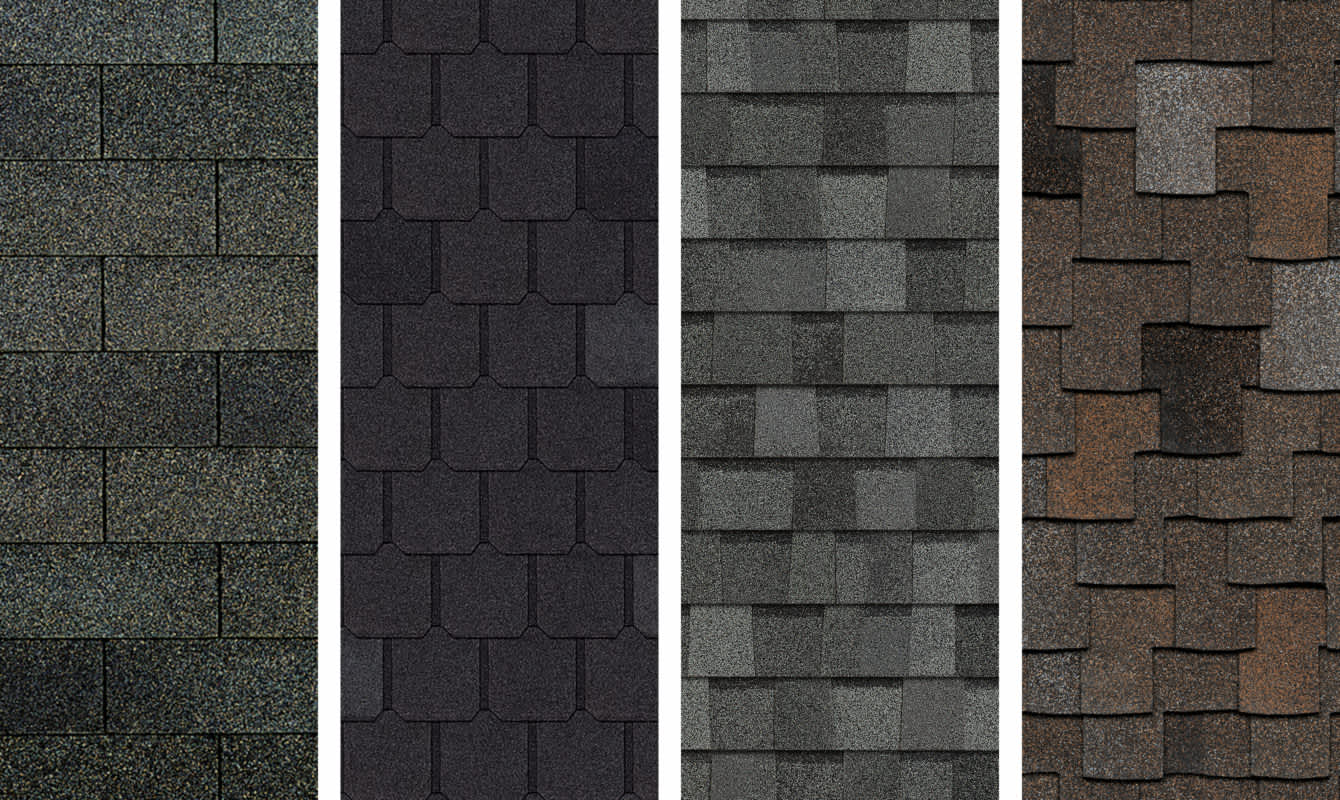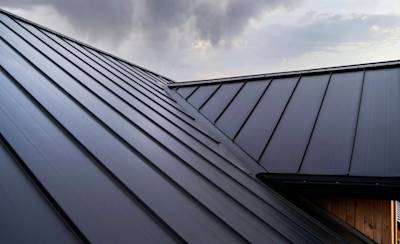Roofs are the primary defence against atmospheric elements for any house. While they are an essential part of every building structure, the importance of choosing the right roof type cannot be understated. Aesthetic appeal, geographical location, weather conditions and budget are crucial factors in deciding on a roof type. This blog post sheds light on the diverse types of roofs that exist and what each of them brings to the table. Thus guiding you towards making an informed choice.
Understanding What Roofs Do
Roofs are not just mere structures that cap a house. They play a pivotal role in preserving the structure's integrity. They shield buildings from various forces such as sun, hail, rain and snow. Moreover, the right choice of roof type can significantly increase a building's energy efficiency, thereby contributing to an eco-friendly lifestyle.
Common Roof Types
Each roof type comes with its unique style, design, benefits and costs. By understanding each roof's unique workings, homeowners can settle on the perfect match for their home style, weather conditions, and budgets.
Gable Roof
Gable roofs, also known as pitched or peaked roofs, are one of the most popular roof types in the US. They're easily recognized by their triangular shape. This design allows for easy water runoff, which means less chance of water pooling and causing damage. It offers more space for the attic or for high ceilings and provides good ventilation for your home.
Hip Roof
Hip roofs have slopes on all four sides. The sides are all of equal length and come together at the top to form a ridge. This design is more stable than the gable roof, especially for homes in high-wind or hurricane-prone areas. The slopes allow for easy snow and water runoff.
Flat Roof
Despite the name, flat roofs are not entirely flat. They have a minor pitch to allow for water runoff. These roof types are common in commercial buildings but can also be seen in residential houses. Homeowners can utilize this space for a garden, patio or as an outdoor living area.
Mansard Roof
A mansard roof is a four-sided gambrel-style hip roof characterized by two slopes on each of its sides. The lower slope is steeper than the upper. This style maximizes usable space in the attic and offers extra living space.
Roofing Materials
Beyond the structure of the roof, the material used further affects a roof's efficacy and longevity. Some common roofing materials include:
- Asphalt shingles: They are the most common roofing material due to their durability and affordability.
- Metal roofing: Although pricier than asphalt, metal roofs are resistant to extreme weather conditions and have longer lifespans.
- Slate and tile roofing: These materials offer a distinctive appearance and are fire-resistant. However, they are on the higher end of the price spectrum.
- Wood shingles: They provide a beautiful rustic look and offer good insulation. However, they are not the best option for fire-prone or humid areas.
Roof Types and Home Style
Matching roof style with the architectural design of the home strongly contributes to its aesthetic appeal. For instance, gable roofs go well with cottage or Tudor style homes while flat roofs are a common feature of modern or industrial architecture. Hence, considerations concerning aesthetics should be carefully made while deciding on the roof type.
Choosing a roof type goes far beyond selecting what sits atop a house. It involves meticulous consideration of various factors, ranging from weather conditions to budget and aesthetic appeal. Being equipped with this knowledge, homeowners can make informed decisions and get the best-suited roof type for their homes.
Frequently Asked Questions about Roof Types
What are the various types of roofs available?
There are numerous types of roofs, each with its unique attributes. The common roof types include gable roofs, hip roofs, mansard roofs, flat roofs, shed roofs, butterfly roofs, gambrel roofs, and dormer roofs. These roof types differ in their construction design, functionality, and aesthetic appeal.
What are gable roofs?
Gable roofs, also known as pitched or peaked roofs, are some of the most popular types in the US. They are easily recognized by their triangular shape. Gable roofs can shed water and snow easily, provide space for an attic, and allow for more ventilation.
What are hip roofs?
Hip roofs have slopes on all four sides. The sides are all equal length and come together at the top to form a ridge. This style of roof is more stable than the gable roof. Hip roofs also provide shade on all four sides of the building.
What are mansard roofs?
Mansard roofs, also known as French roofs, are four sided roofs with a double slope on each side that meet forming a low-pitched roof. The lower slope is much steeper than the upper. This type of roof allows for extra living space on the top floors of a house.
What is a flat roof?
Flat roofs are common in both residential and commercial buildings. As the name suggests, flat roofs appear to be entirely flat but they do have a slight pitch to allow for water runoff and drainage. Flat roofs provide extra outdoor living space.
What is a shed roof?
A shed roof is a single sloping roof surface, often not attached to another roof surface. Shed roofs are easy to construct and provide great ventilation and solar potential. They are common in modern home designs and additions.
What is a butterfly roof?
A butterfly roof has two tandem pieces angled up on either side with the middle section angled down, forming a V shape. This design has a beautiful aesthetic appeal and can also hold rainwater collectors in the middle.
What is a gambrel roof?
A gambrel, or barn roof, is similar to the mansard roof. It is a two-sided roof with two slopes on each side. The upper slope is positioned at a shallow angle, while the lower slope is steep. Gambrel roofs are often seen on barns, farm houses or country style homes.
What is a dormer roof?
A dormer roof is a roofed structure, often containing a window, that projects vertically beyond the plane of a pitched roof. Dormer roofs are used to create additional space and openings in the roof of a building.
Which roof type is best suited for high wind areas?
Hip roofs are generally the most robust and best-suited roof types for high wind areas. Their sleek design and equal slope on all sides reduce the risk of wind damage. Gable roofs, on the other hand, may not perform well in high wind areas unless properly braced from inside.
Which roof type is best for snowy areas?
Roofs with a high pitch such as mansard roofs or gable roofs are preferable for high snowfall areas. These styles allow the snow to slide off the roof surface more easily, reducing the weight and pressure on the structure of the house.
Which roof types are most eco-friendly?
Green roofs, solar roofs and cool roofs are considered eco-friendly roof types. Green roofs have plant cover that absorbs rainwater, provides insulation and combats heat island effect. Solar roofs have integrated solar panels that generate electricity. Cool roofs reflect more sunlight and heat away from the building, reducing energy costs.
Pros and Cons of Different Roof Types
Gabled Roofs
Pros of Gabled Roofs
- Easy to build: Due to their simple design, gabled roofs are less complicated and faster to construct.
- Cost-effective: Gabled roofs are not as expensive to build as some more intricate roof types.
- Good for climates with regular rain and snow: The slope of a gabled roof allows for quick water runoff, reducing the likelihood of water damage or leaks.
Cons of Gabled Roofs
- Vulnerable in high winds: If gabled roofs are not well-constructed or reinforced, they can collapse or peel away in severe wind conditions.
- Interior space considerations: The pitch of the roof can reduce usable attic space.
Flat Roofs
Pros of Flat Roofs
- Extra living space: Flat roofs can provide additional outdoor living space, which can be used for a rooftop garden or patio.
- Easier to construct: Flat roofs require fewer materials and take less time to build, which can be more cost-efficient.
- Easy maintenance: Routine tasks like gutter cleaning and roof repairs are easier and safer to perform on flat roofs.
Cons of Flat Roofs
- Poor drainage: Water can pool on the surface of a flat roof, causing damage over time.
- Regular maintenance: Despite easy access, flat roofs require regular maintenance to avoid leaks.
- Lower lifespan: Flat roofs tend not to last as long as pitched roofs.
Hipped Roofs
Pros of Hipped Roofs
- Sturdy design: With slopes on all four sides, hipped roofs are more stable and less susceptible to wind damage.
- Increased living space: The design of hipped roofs provides for more usable living space.
- Great for both windy and snowy climates: Hipped roofs can efficiently shed both snow and water, reducing the risk of weather damage.
Cons of Hipped Roofs
- More complex to build: Hipped roofs are more complicated and thus more costly and time-consuming to build than simpler roof types.
- Regular maintenance required: Given their complexity, hipped roofs demand regular inspections and potential repairs to ensure their integrity.
Mansard Roofs
Pros of Mansard Roofs
- Additional living space: Mansard roofs include enough space to accommodate an entire additional floor of living space or attic.
- Aesthetic appeal: With their classic, French-inspired design, Mansard roofs can improve a house’s architectural appeal.
Cons of Mansard Roofs
- Costly to build: The intricate design of Mansard roofs makes them more expensive and time-consuming to construct.
- Poor weather resistance: Mansard roofs are not recommended for areas with heavy snowfall, as they do not shed snow as efficiently as other roof types.
- High maintenance: The detailing on these roofs often requires significant upkeep, increasing the overall maintenance costs.
Summary
It's clear that roof types play a significant role in determining the durability and aesthetic of any building, be it residential or commercial. Each type, whether it’s flat, gable, or hip, has distinctive features and advantages that set it apart from the others. The overall architectural design of a building, climate conditions, and budget are key deciding factors when choosing the most suitable roof type.
Indeed, investing in the right roof types can offer long-term benefits. Not only does it provide shelter and safety, but it also contributes to the building's functionality and value. Therefore, it’s important to assess all available types, understand their pros and cons, and seek professional advice to make an informed choice that can withstand years of different weather conditions.
Finally, as we've seen, the impact of our choice in roof types goes beyond mere aesthetics. It determines a structure's energy efficiency, maintenance requirements, and resilience to natural disasters. By carefully considering the different factors and aiming for a balance between style, function, and cost-efficiency, homeowners and architects alike can ensure a durable and comfortable dwelling or workspace while respecting the surroundings and maintaining sustainability.
About Top Tier Roofing
Welcome to Top Tier Roofing, your reliable partner in all roofing operations based in Jefferson, GA. We're family-owned, which means we understand the importance of a safe, secure roof over your family's head. We offer a comprehensive range of services, including roofing repairs, installations, inspections, and maintenance. Our seasoned team of professionals always ensures that the job is done right, prioritizing customer satisfaction above all. When it comes to taking care of roofs, you can count on Top Tier Roofing to rise above the rest.






